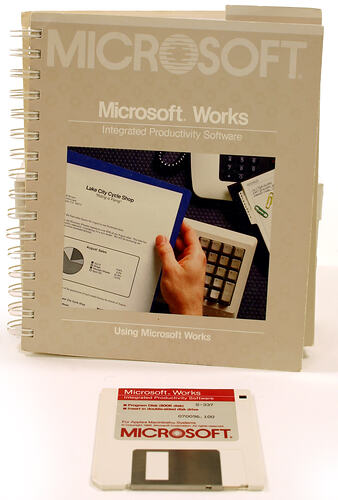MS Works was my first application on the Macintosh. It was very similar to AppleWorks on the Apple II platform - it even came with a translator to convert files from AppleWorks - except with the additional graphics capabilities of the Macintosh.
The Works word processor was competent but MS Word soon became preferred for its ability to implement many desktop publishing effects.
Works remained my main spreadsheet and database until ClarisWorks burst on the scene with its drawing and painting capability, plus brilliant integration of word processing, database and spreadsheet.
In essence Works combined cut down versions of the more capable full featured MS applications: Word, File, Excel and Chart, plus some communications capability, in a remarkably compact solution which could fit on a single floppy and run in the limited RAM available at the time.
Works provided almost everything the average user needed in a spreadsheet and, in particular, the charting function was a great leap forward not available in the monospace display environment of the Apple II. Only heavy power users would need the extra features of MS Excel, such as more sophisticated charting and linked spreadsheets.
The database was very similar to the spreadsheet in form and function, in that it was dominated by table view. The concept of free form screen design, which was especially useful in document design, was yet to be invented by FileMaker. Nevertheless, the table view of Works was surprisingly useful, with the spreadsheet likeness sometimes an advantage. For example, it had the ability to instantly re-size columns, re-arrange column order, split the display, or even convert a found set back to a spreadsheet and then instantly chart it. These capabilities are only now being approached twenty years later in FileMaker Pro.
The word processor was pretty much a cut down version of MS Word and, not surprisingly, Word provided a translator to convert MS Works files. This provided an upgrade path from AppleWorks, onto 3.5 inch floppy, then via MS Works to MS Word.
Works was very useful to me in keeping the handicapping details of the Australian offshore racing fleet. On several occasions it enabled instant analysis of the fleet and provided the information needed to make management decisions. This was all carried out during meetings, on the PowerBook 100, to the amazement of DOS users, who were surprised at the speed with which results were produced, including charts, by a laptop supposed to be greatly outpaced by the faster chips in their laptops.
More Information
-
Keywords
-
Authors
-
Article types

